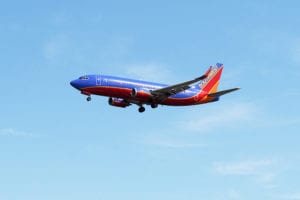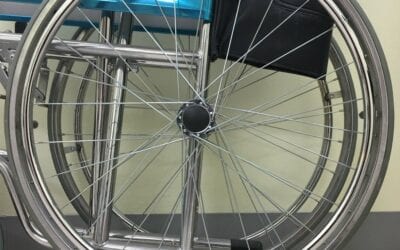Questions asked about planes and answers
 I’m often asked plane questions by air travelers, from where to sit on a plane in case of a crash, to why there are tiny holes in aircraft windows, to will lightning cause a plane to crash. Some readers ask practical questions such as are tray tables really as dirty as some say, and how far can a plane fly on one engine in case birds cause severe engine damage.
I’m often asked plane questions by air travelers, from where to sit on a plane in case of a crash, to why there are tiny holes in aircraft windows, to will lightning cause a plane to crash. Some readers ask practical questions such as are tray tables really as dirty as some say, and how far can a plane fly on one engine in case birds cause severe engine damage.
Over the last two years I’ve kept track of the plane questions I’ve answered about aircraft. Here are my answers to the ten most frequently asked plane questions about airplanes that have been posed to me during that time.
10. Why are airplane windows rounded?
Squared windows are weak in the corners as stress concentrates there. The windows will weaken and deform at the stress points from repeated cabin pressurization and depressurization, eventually causing them to break. Rounded windows distribute the stress across the windows. Therefore rounded windows are less prone to weaken or deform, allowing them to survive the rigors of flight.
9. Why do airplane windows have a hole in them?
There is a large difference in pressure between the air outside and inside planes. Today’s commercial jet windows are made of three separate panes for durability and safety. The little hole you see in the window is a bleed hole that allows the pressure to be balanced between the cabin and the window panes. It also allows moisture to get out from inside the windows to prevent frost and condensation from blocking passengers’ views.
READ ALSO ON TRAVELERS UNITED BLOG:
Final-boarding rule — the random airline 10-minute rule
You need to learn reasonable airline etiquette
8. Can a plane really fly on one engine?
Most of today’s commercial aircraft have just two engines. Planes scheduled for long distance routes, especially over oceans or large uninhabited regions, must be certified by the Federal Aviation Administration for “Extended-range Twin Operations” (ETOPS). ETOPS certification is essentially how long it can fly on one engine. The Boeing 787, for example, has an ETOPS certification for 330 minutes. That means the 787 has been rated to fly for 330 minutes, 5.5 hours, on one engine.
7. Do they really dump the lavatory toilet contents into the ocean?
No. When airplane lavatory toilets are flushed, the contents goes into a holding tank in the plane. The tank is emptied into a tank truck at the airport for proper disposal.
6. Is stowing my tray table and moving my seat to the upright position really a safety measure?
Just an inch or two can make a difference when passengers must quickly evacuate from a plane in an emergency. Having the widest possible space between seats is very important for passenger safety.
5. Do planes’ oxygen masks have just 15 minutes of air?
It’s true that the drop-down oxygen masks in planes, used in case the plane depressurizes, run out of oxygen after about 15 minutes, but it’s really all that’s needed. If a plane depressurizes at cruising altitude, the pilot will immediately descend. The plane should be able to descend to less than 10,000 feet, where passengers can breathe normally without extra oxygen, in much less than 15 minutes.
4. Are aircraft tray tables as unsanitary as is rumored?
As one might expect, the toilets and flush buttons in airplanes teem with bacteria. According to experts, tray tables often harbor ten times the bacteria that is found in the lavatory. Seatbelt buckles and seat pockets are almost as bad. I use sanitizer wipes on my seatbelt buckle and tray table soon after boarding and don’t use the seat pocket at all.
3. Can flight crew members enter a locked cockpit in an emergency?
The flight crew has a special access code to unlock the cockpit door in case of emergency; however, to prevent a hijacking, the pilots are warned if the code is entered to unlock the door. The pilots can then decide to manually keep the door locked if they suspect a hijacking. If they don’t react to the warning the door will automatically unlock for a short time to allow crew members to enter the cockpit.
2. Will lightning cause my plane to crash?
According to experts, each U.S. commercial airplane is struck by lightning at least once each year, yet the last confirmed commercial plane crash caused by a lightning strike, in the U.S., occurred 50 years ago, when the lightning strike caused the plane’s fuel tank to explode. Today’s commercial airliners are designed to conduct the electricity from a lightning strike harmlessly back into the air.
1. Where’s the safest seat location during a plane crash?
I’ve written about surviving plane crashes in the past. There isn’t any particular seat location which is safer than another. Each crash is unique and predicting who will survive and who will not isn’t possible. Statistics bear that out. Studies have shown that the fatality rates are almost the same between the front and middle of the plane, with the seats in the rear not far behind.
If you have plane questions not answered here, please ask it in a comment or send me an email. I’ll try to answer your question and perhaps it will be included in a future column.
(Image: Southwest Airlines plane landing at Philadelphia International Airport, Copyright © 2015 NSL Photography. All Rights Reserved.)
After many years working in corporate America as a chemical engineer, executive and eventually CFO of a multinational manufacturer, Ned founded a tech consulting company and later restarted NSL Photography, his photography business. Before entering the corporate world, Ned worked as a Public Health Engineer for the Philadelphia Department of Public Health. As a well known corporate, travel and wildlife photographer, Ned travels the world writing about travel and photography, as well as running photography workshops, seminars and photowalks. Visit Ned’s Photography Blog and Galleries.



